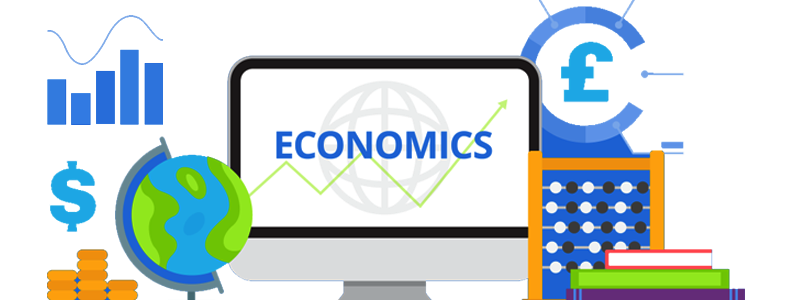
ECONOMICS ASSIGNMENT HELP
Certainly! Economics assignments can cover a broad range of topics, including microeconomics, macroeconomics, econometrics, and economic theory. Here’s a structured approach to help you with common types of economics assignments:
1. Microeconomics
Key Concepts:
- Demand and Supply: Understanding how market equilibrium is determined.
- Elasticity: Measures responsiveness of quantity demanded or supplied to changes in price.
- Consumer Theory: Utility maximization and budget constraints.
- Production and Costs: Analysis of production functions, short-run and long-run costs.
Common Assignments:
- Demand and Supply Analysis: Analyze shifts in demand and supply and their effects on equilibrium prices and quantities.
- Elasticity Calculations: Compute price elasticity of demand or supply.
Example Problem:
- Problem: If the price of a product increases from $10 to $12 and the quantity demanded decreases from 100 units to 80 units, calculate the price elasticity of demand.
- Solution:
The absolute value of the price elasticity of demand is 1.0, indicating unit elasticity.
Price Elasticity of Demand (PED) = (% Change in Quantity Demanded) / (% Change in Price) % Change in Quantity Demanded = (80 - 100) / 100 = -20% % Change in Price = (12 - 10) / 10 = 20% PED = -20% / 20% = -1.0
2. Macroeconomics
Key Concepts:
- Gross Domestic Product (GDP): Measurement of a country’s economic performance.
- Inflation: Rate at which the general level of prices for goods and services is rising.
- Unemployment: Various types including frictional, structural, and cyclical.
- Monetary and Fiscal Policy: Tools used by governments and central banks to influence economic activity.
Common Assignments:
- GDP Calculation: Compute GDP using expenditure or income approach.
- Inflation Rate Calculation: Use Consumer Price Index (CPI) to measure inflation.
Example Problem:
- Problem: Calculate the GDP using the expenditure approach given the following data: Consumption = $500 billion, Investment = $200 billion, Government Spending = $150 billion, Net Exports (Exports - Imports) = -$50 billion.
- Solution:
GDP = Consumption + Investment + Government Spending + Net Exports GDP = $500 billion + $200 billion + $150 billion - $50 billion GDP = $800 billion
3. Econometrics
Key Concepts:
- Regression Analysis: Techniques to estimate relationships between variables.
- Hypothesis Testing: Procedures to test assumptions about economic models.
- Time Series Analysis: Analysis of data points collected or recorded at specific time intervals.
Common Assignments:
- Regression Models: Estimate and interpret linear regression models.
- Testing Hypotheses: Perform t-tests or F-tests to analyze statistical significance.
Example Problem:
- Problem: Estimate a simple linear regression model with the following data: Y = 2 + 3X. Interpret the coefficients.
- Solution:
Y = 2 + 3X - Intercept (2): When X is zero, Y is 2. - Slope (3): For each unit increase in X, Y increases by 3 units.
4. Economic Theory
Key Concepts:
- Market Structures: Perfect competition, monopoly, monopolistic competition, oligopoly.
- Game Theory: Study of strategic interactions among rational decision-makers.
- Welfare Economics: Analysis of economic policies in terms of their impact on social welfare.
Common Assignments:
- Market Structure Analysis: Compare and contrast different market structures and their outcomes.
- Game Theory Problems: Solve problems related to strategic decision-making.
Example Problem:
- Problem: Analyze the market structure of a local coffee shop industry. Is it perfectly competitive or monopolistic?
- Solution:
Analyze the characteristics such as number of firms, product differentiation, and entry barriers. If there are many coffee shops with similar products and low barriers to entry, it’s likely perfectly competitive. If there’s only one major coffee shop with unique offerings and high entry barriers, it’s more monopolistic.
5. Economic Policy
Key Concepts:
- Fiscal Policy: Government spending and taxation decisions.
- Monetary Policy: Central bank actions to control money supply and interest rates.
- Trade Policy: International trade agreements and tariffs.
Common Assignments:
- Policy Analysis: Evaluate the impact of fiscal or monetary policies on the economy.
- Case Studies: Analyze historical examples of economic policy impacts.
Example Problem:
- Problem: Assess the potential impact of a government tax cut on consumer spending and GDP growth.
- Solution:
A tax cut increases disposable income, potentially leading to higher consumer spending. This can boost aggregate demand, resulting in increased GDP growth. The exact impact depends on the size of the tax cut, the marginal propensity to consume, and other economic factors.
6. Tips for Success
- Understand Key Concepts: Make sure you grasp fundamental economic theories and principles.
- Use Data Effectively: Apply relevant data to support your analyses and conclusions.
- Practice Problems: Regularly work through sample problems to enhance your problem-solving skills.
- Seek Clarification: If you’re unsure about a topic or problem, don’t hesitate to ask for help or further explanation.
If you have specific questions or need help with a particular type of economics assignment, such as solving a complex problem, analyzing a policy, or writing a report, please provide more details, and I can offer more targeted assistance!